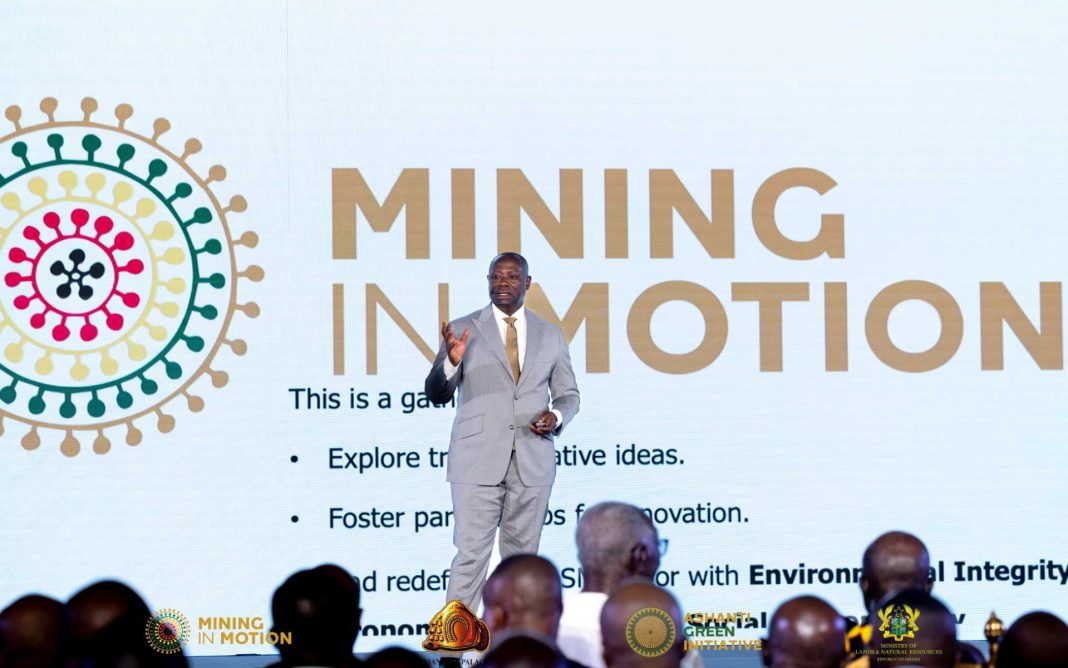Emmanuel Armah Kofi Buah, Ghana’s Minister of Lands and Natural Resources, outlined a five-pillar strategy for the country’s mining industry at the Mining in Motion 2025 summit. The strategy is aimed at reforming the sector while empowering artisanal and small-scale mining (ASGM) initiatives.
In a presentation during the opening of the summit, Minister Buah underscored how the strategy is designed to address illegal mining, which has significantly impacted the environment. Illegal mining occupies over 16% of the nation’s forests, degrading more than 5,500 hectares. As such, the strategy seeks to address this issue by enhancing ASGM developments. ASGM operations have grown to account for 52.1% of Ghana’s total gold exports in 2025, and the strategy aims to further optimize the industry’s expansion.
“Of the $4 billion in goods shipped from Ghana in Q1, 2025, 52.1% is from artisanal and small-scale miners – hence the need to ensure that mining is done in a sustainable manner,” stated Minister Buah.
The first pillar of the strategy focuses on reforming the licensing regime. According to Minister Buah, the Ministry is currently overhauling the existing Minerals and Mining Act to attract new investments and bring in fresh ASGM players. This includes reviewing and restructuring licenses to ensure they align with Ghana’s national development agenda.
“The strategy came into implementation four months ago and we want to ensure we do mining right,” stated Minister Buah.
The second pillar centers on enhancing law enforcement. The Ministry is collaborating with various government agencies to intensify the arrest and prosecution of those engaged in illegal mining. This includes the creation of an independent Anti-Illegal Mining Military Task Force and the reorganization of security operations at both district and community levels.
Environmental restoration is also a key priority. Under the third pillar, the Ministry has reclaimed eight out of nine forest reserves previously designated as red zones for illegal mining within just four months. Reforestation programs are now underway to restore these degraded areas and ensure long-term environmental sustainability.
The fourth pillar emphasizes stakeholder engagement and public education. The Ministry is working closely with traditional authorities, lawmakers, civil society organizations and the general public to promote sustainable practices and encourage collective responsibility in preserving Ghana’s natural resources.
“Lack of jobs and skills has been the main cause of illegal mining and we are dealing with this directly by diversifying employment. We want to create over 150,000 new jobs,” stated Minister Buah.
The fifth pillar aims to provide alternative livelihoods and job opportunities, especially for youth and individuals previously involved in illegal mining. Through programs such as the National Alternative Employment and Livelihood Program for Illegal Miners; the 1 Million Coders Program; and initiatives by the Youth Employment Agency, the government is offering skills training and employment placement. These efforts are designed to reduce reliance on illegal mining and diversify economic opportunities across the country.
The pillars will be achieved through various strategies such as the Ghana Gold Board, the Minerals Development Fund, the Minerals Income Investment Fund, Geofencing of Excavators, the Investment in Geological Investigations of Mineralized Areas, Small-Scale Mining Cooperatives, the Blue Water Initiative, the Tree for Life Initiative and the Anti-Illegal Mining Secretariat.
